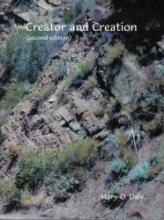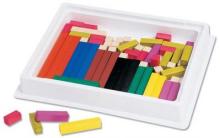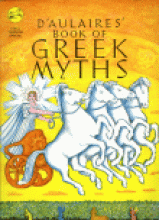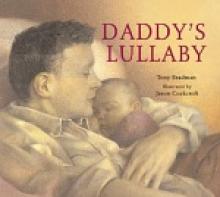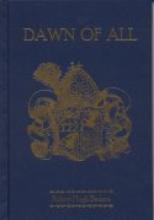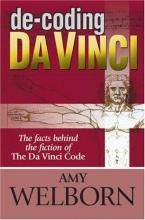No name
Creator and Creation (third edition)
Nihil Obstat, Imprimatur
Crusader King, A Novel of Baldwin IV and the Crusades
Cuisenaire Rods
Cursive Connections: A Traditional Style
The text is strictly black and white with no distracting illustrations. (These details are a matter of personal preference - I prefer this simpler style and others would rather have more colorful texts.) This text would be easy to use in a homeschooling situation because of the introductory information is rather complete: "the purpose of these materials", "who uses these materials", "practice methods", "expectations of the child", "correct paper position", etc. Different sorts of cursive strokes are explained as well as several examples of poorly done letters alongside "better" and "best" examples.
Individual cursive letters are given quite a bit of practice space on their own, and then practiced alongside other individual letters (particularly those which are more difficult to connect). As more and more letters are introduced, the practice begins to include short words and some phrases. After all of the lower-case cursive letters are introduced, the text moves along to Upper Case. "When should a capital letter connect to the next letter?" and when it should be left alone is also clearly explained.
This is in no way a "religious" text. However, the words God, and many Christian names (such as Xavier) are included in the word practice pages. Also, there is absolutely no offensive or "politically correct" content.
D'aulaire's Book of Greek Myths
You can purchase this paperback or hardcover book from most homeschool companies or better bookstores. Perhaps your local library would have a copy on it's shelves that you could borrow? It can be used for a variety of ages. Younger children would like it as a 'read aloud' and older students would enjoy it as an excellent introduction to greek mythology. All in all, it is a classic retelling of Greek myths and legends, and belongs on every homeschool bookshelf.
Daddy's Lullaby
Dawn of All
Msgr. Benson wrote the book, he comments in a preface, as a response to readers of Lord of the World who felt he painted too bleak a picture of a future where Christianity was marginalized and all but extinguished by the forces of Modernism. This book takes the opposite premise as a starting point - that the truth of Catholic claims have been almost universally recognized except by a few stubborn Socialists.
A dying priest of the turn of the century, who has lost his faith to the modern conceptual framework of science and psychology, slips into a coma and find himself, with no memory of his past, in a future world which seems strange and unsettling to his Modernist sensibilities. The science and psychology communities studying miracles under the authority of religion at Lourdes? An Ireland which has become basically a country-wide contemplative order? Learned men telling him pityingly that it is only the half-educated mind which can compartmentalize faith and reason rather than realizing they are both tools for the search for Truth? The USA government a monarchy, with Massachusetts a haven for a last remnant of earnest, earthbound Socialism?
The searching, intellectual, slightly distanced tone of these observations suits the character of the protagonist-priest. With his intellect, he sees the force of the Catholic claims; but his heart continues to resist. A crisis comes when he witnesses the trial and execution of a pure-minded but self-confessed heretic priest under the secular authority. How can this be right? Can this ascendant Church, whose supremacy is acknowledged world-wide, be truly the Church of its suffering servant Founder? In a world where societies punish heresy as a crime, and "freethinkers" are sent to exile, how can church leaders claim to be allied with He who is meek and humble of heart? The church has shown herself to have the Truth, but does she have a heart?
Monsignor Benson uses this projected future society to explore some of the criticisms of our past, historical Church and offer some perspective on the paradox of a Holy Church whose earthly work is carried out by weak, fallen man. I don't think it is any coincidence that the dying priest has lost his faith while co-writing a book about the popes. When a ferocious German socialist party, willing to annihilate the world rather than concede defeat, threatens Europe and kills Catholic envoys, it is a pope who show how meekness and courage can be reconciled with authority in one person, the person of Christ's Vicar.
Reading this book, the Catholic reader must examine his assumptions and think about profound topics. Though the reading and interest level is suitable for a ninth grader, I think the novel should be read under supervision, with some care to explain to the student the genre and intentions of the book. I think it would be more profitably read along with the companion novel Lord of the World and possibly as a starting point to a study of various ideologies and how they affect the day to day details of society.
de-coding Da Vinci
The 2003 release of the novel The Da Vinci Code created one of the largest literary crazes in recent history. With sales of almost 6 million in its first year, the novel gained a cult-like following. Author Dan Brown's ability to blend fact and fiction left many readers questioning what they really knew of the origins of Christianity. News is now out that we can expect to see the story in theaters in about a year. Certainly viewers will come away with many of the same questions readers had as to how much, if any, of the story line is factual, and how much is fiction.
Fortunately for those who want to sort out the facts, Amy Welborn has written decoding Da Vinci: the Facts Behind the Fiction of the Da Vinci Code. Welborn covers everything from the marketing of the book to the sources of information presented, and ultimately reveals a "startling number of blatant, glaring errors on matter great and small that should send up red flags to anyone reading the novel as a source of facts, rather than just pure fiction" (decoding Da Vinci p. 10). She also helps explain why this confusion over fact versus fiction is occurring when she states:
Historical fiction is a very popular genre, but in writing historical fiction, the author makes an implicit deal with the reader. He ... promises that while the novel concerns fictional characters engaged in imagined activities, the basic historical framework is correct. [Readers] trust the author is telling the truth about history. In The Da Vinci Code, imaginative detail and false historical assertions are presented as facts and the fruit of serious historical research, which they simply are not. (p. 21 italics added)decoding Da Vinci is handily divided into a preface, a section entitled "How to Use this Book", an introduction which provides a plot synopsis, ten chapters (each addressing one key issue of the book), and an epilogue. The plot synopsis is thorough enough that you need not have read the novel to make use of this book. Each chapter also ends with further reading suggestions and questions for review and discussion. Readers can thus study particular issues in more depth on their own, or even use the material for a group study. The book is a quick read from cover to cover, but also organized so that each chapter stands on its own for easy reference.
Throughout her book, Welborn uses a tone readers will be familiar with from her Prove It series and other writings. Straightforward and to-the-point, she is never condescending or preachy. The book thus becomes a powerful tool to help counter the myths Brown has presented in his original work.
The up-coming movie release makes this book an important and timely choice for adults and older teens to read.
Dead Log Alive!
This book provides an interesting and detailed look at what comes to live in and around a dead log – woodpeckers, squirrels, mushrooms, fungi, moss, molds, porcupines, foxes, snakes, scorpions, millipedes, centipedes, pill bugs, salamanders, ants, termites, and beetles. Includes many interesting color photos and details about each species, how to tell them apart and much more. The book also includes an index, a glossary and suggestions for further reading.

